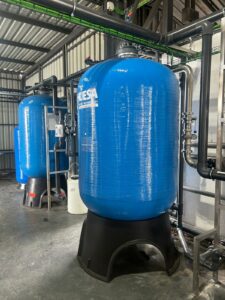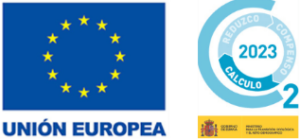On this occasion, we are reporting on the start-up of a water treatment plant for the adaptation of mains
water for use in the food industry, specifically for the manufacture of spirits.
Our client, a leading company in its sector, needed to adapt the mains water for the expansion of its
spirits factory located in Spain. Therefore, after analysing the conditions of the project and the specific
needs of our client, who required a conductivity lower than 5 µS/cm, el equipo técnico de J. Huesa technical team opted for the design and manufacture of a double-pass reverse osmosis plant to guarantee the organoleptic conditions of the water to be used in their production process.
Adopted solution
The main data of the implemented system, consisting of a double-pass reverse osmosis system
preceded by its corresponding pre-treatment, are detailed below.
| Flow rate to pre-treatment | 21,20 m³/h |
| Reverse osmosis first pass flow rate | 24,70 m³/h |
| Reverse osmosis permeate flow rate first pass | 18,50 m³/h |
| Reject flow rate reverse osmosis first pass | 6,20 m³/h |
| Reverse osmosis plant conversion first step | 75 % |
| Reverse osmosis second pass feed flow rate | 18,5 m³/h |
| Permeate flow rate reverse osmosis second step | 15 m³/h |
| Reject flow rate reverse osmosis second step | 3,5 m³/h |
| Conversion of reverse osmosis plant second stage | 80% |
Table 1. Installation design data
The rejection flow from the second stage, 3.5 m³/h, will be returned to the head of the first reverse
osmosis stage. Therefore, the flow rate to the first stage osmosis system is 24.70 m³/h.
The main components of the system are detailed below.
Pretreatment
The water coming from the mains is introduced into an activated carbon filter, the purpose of which is
to retain chlorine compounds and any type of organic pollutant present in the water.

Picture 1. Filtration System
This filtration process has two distinct phases:
- Production or service in which the water is introduced through the upper part of the activated
carbon filter and exits through the lower part, with the impurities subject to this filtration
equipment being retained in the activated carbon particles. - Cleaning is carried out to prevent the activated carbon particles from becoming saturated and
ceasing to perform their function. The cleaning cycle has two phases, backwashing and settling,
which guarantee the correct functioning of the system. The raw water used in this process is
diverted to the drain.
The water is then subjected to a dosage of anti-scalant and sequestering agent, before passing through a cartridge filter, which is made of AISI 316 stainless steel. It consists of 9 cartridges of 40″, with a filtration degree of 5 microns and a maximum pressure of 10 bar.
When the filter is saturated, it can be seen by the difference in pressure on the pressure gauges placed at the inlet and outlet of the filter.
Reverse Osmosis
Reverse osmosis is a process by which water is demineralised by pushing it under pressure through a
semi-permeable reverse osmosis membrane. a semi-permeable reverse osmosis membrane. It works
by using a high-pressure pump to increase the pressure on the salt side of the reverse osmosis and
force the water through the semipermeable reverse osmosis membrane. reverse osmosis semi-permeable membrane, leaving almost all dissolved salts (between 95% and 99%) in the reverse osmosis stream. 99%) in the reject stream.
This natural pressure plus the net pressure necessary to obtain the production flow (which is called
operating pressure) is obtained by using a vertical high-pressure centrifugal pump in AISI 316 stainless
steel.
This is one of the most important parts of the equipment, as it is the only mechanical element in
permanent movement, which determines the maintenance of the equipment and the cost per cubic
metre of water treated as a function of the electrical energy consumed.
The plant is equipped with centrifugal pumps:
- The pumps with the highest power are for supplying the osmosis plant.
- The pumps with the lowest installed power are those that will be used for sweeping and chemical
washing of the membranes.
The plant shall be able to operate at constant pressure (by means of a pressure transmitter of the
discharge pump) or at constant treated water flow (by means of a treated water flow transmitter).
The plant shall be fitted with spiral wound polyamide membranes specially constructed for high salt
concentration water up to specially constructed for high salt concentration water up to 8000 ppm. These
membranes have high chemical resistance, they can work in a pH range of 2-13, which makes them
very easy to wash and recover, and they can be used in a pH range of 2-13. They are easy to wash and
recover, and can be used with a variety of washing chemicals.
They are mounted in pressure housings, manufactured in coiled GRP.

Picture 2. RO System
Membrane cleaning system (flushing/CIP)
In this plant, CIP cleaning and flushing are carried out automatically by means of screen configuration,
activated manually by the operator.
This equipment, which is common to both reverse osmosis lines, ensures the automatic cleaning of the
membranes inside the pipe. These cleanings are programmed from the touch screen, according to the
needs of the operators and/or every time the plant is stopped.
The system is equipped with a pump whose impeller and jacket are made of AISI316, capable of
withstanding the most chemical products used to recover the membranes of the installation. The water
will be sucked from a 2 m3 tank with osmosed water in which the mixture of chemical products will be
diluted.
Instrumentation and control
The reverse osmosis plant is equipped with instrumentation and control elements (automatic valves,
pressure switches, pressure transmitters, flow meters, conductivity and pH meters…) which
communicate with the programmable logic controller, included in the control panel, through IO-Link
technology.
The control panel also includes a touch screen for the operation and configuration of the plant. The J.
Huesa Instrumentation and Control team has designed the control panel so that it can be integrated into
the customer’s SCADA system. It also includes a remote control system.







